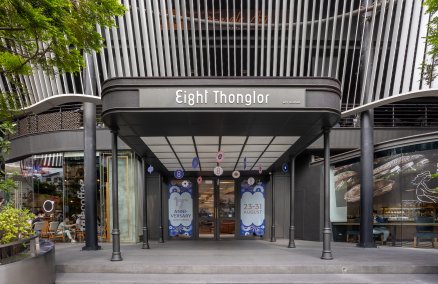We met up with outspoken environmentalist Thon Thamrongnawasawat, 50, a marine scientist at Kasetsart University and an advisor to the Department of National Parks. His job: to protect both parks and tourism.
How bad is Thai tourism now?
We hit 30 million visitors in August this year, which is double the number from six years ago. Still, the amount spent per head has increased just two percent in the same six-year gap, showing that we’ve clearly failed in increasing the number of higher-income tourists who visit. It’s a serious problem for our economy as tourism accounts for 20 percent of our gross domestic product. There aren’t many countries in the world where the number is this huge. But when there are huge tourist numbers, it also has an enormous impact on our natural resources.
And what impact is that having on our national marine sites?
Let me do a comparison. Australia’s Great Barrier Reef, once the largest marine park in the world, covers 350,000 sq kilometers and allows about 2.3 million visitors per year. Hat Noppharat Thara-Mu Ko Phi Phi National Park consists of only 390 sq kilometers and admits 1.8 million visitors a year, when it only has the capacity for 300,000. So how is it coping with the other 1.5 million? On top of this, we only have 100 low-wage officers and a small boat to oversee all these visitors.
So why does nothing happen to change that?
We’re often asked why we don’t decrease the capacity, but it’s not that easy. I don’t think any government would be brave enough to break its main GDP revenue. The increasing number of visitors also seems to be the only achievement of every government. It’s “Hooray!” every time tourist numbers increase.
So there’s no solution?
I knew that we couldn’t decrease visitor numbers, so instead we implemented the “Phi Phi Model” at Phi Phi National Park and some other marine parks last year. We knew that there were a lot of things slipping under officers’ radars like illegal tours and boats. So we toughened up our rules. We’ve removed all the original officers and replaced them. In 2015, we collected entrance fees of B24 million. But with the new staff team, we have collected B530 million so far this year. It’s not only here. Ao Phang Nga National Park has collected B300-400 million more than last year. In 2015, the revenue of all national parks was B896 million. But with just these two national parks, the total amount up until August has already surpassed the whole revenue of last year.
Why is making more money a good thing for the environment of these parks?
With this model, I aim to create a sufficient system to protect these national marine parks. We have already bought five new boats and plan to install at least 150 more buoys for tourist boats in order to stop anchors droppings to coral reefs. And of course, increase the wage of low-rank officers who do hard work to protect our natural resources.
What about the islands’ closure?
We’re still evaluating the situation. Last year, when we announced Tachai Island’s closure, it became a big headline around the world, as it’s really rare for this to happen in Thailand. Our country has been a slave to tourism for so long. The Tourism Authority of Thailand’s Key Performance Indicator [KPI] might be scaled by the number of visitors but the national park’s KPI is how we prevent nature from deteriorating. We might periodically close Maya Bay next, who knows. Local Phi Phi administrators have already raised this issue as they want to protect their treasured home as well.















